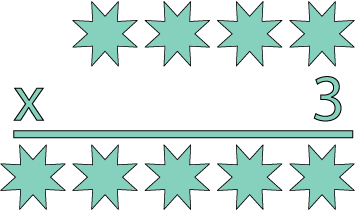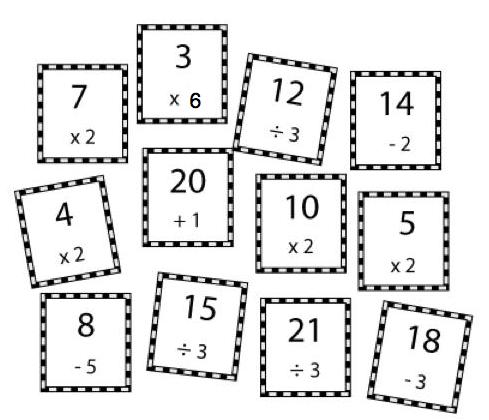We explored something behind the ideas of using place value as a number scheme and the effect of different place values or similarities and differences.
 We started by listing all of the coins or notes that can be used in the UK. Explorers listed as many as they could on paper. I had examples of each of them and so I laid them out in a tabular form with different place values being in rows and the first digits being in columns (1, 2, 5 are the only first digits in current UK money.
We started by listing all of the coins or notes that can be used in the UK. Explorers listed as many as they could on paper. I had examples of each of them and so I laid them out in a tabular form with different place values being in rows and the first digits being in columns (1, 2, 5 are the only first digits in current UK money.
I asked why and we looked at how easy or difficult it is to count in those numbers (1, 2, 5 and 10, 20, 50 etc.) compared to other numbers.
From there we went on to see how the base 10 number square organised these tables and noticed that they were all in columns but non coin/note values were all over the place.
 I moved on to getting explorers to create a little book of different place value based number squares. Explorers went for it in a very exploratory manner. Quite a few parents were on board for this class and helped out. This was really useful and might be a good way to set up a session. A particular family learning type session where I set up activities, resources and challenges and give some advice about how to let children explore and how to encourage them to go further.
I moved on to getting explorers to create a little book of different place value based number squares. Explorers went for it in a very exploratory manner. Quite a few parents were on board for this class and helped out. This was really useful and might be a good way to set up a session. A particular family learning type session where I set up activities, resources and challenges and give some advice about how to let children explore and how to encourage them to go further.
 It gave me a chance to work with some of the more reticent explorers which showed me the importance of a part like this in every session. I would need to think about what I could do with those explorers who have no problem doing whatever comes into their head but don't check how they are doing.
It gave me a chance to work with some of the more reticent explorers which showed me the importance of a part like this in every session. I would need to think about what I could do with those explorers who have no problem doing whatever comes into their head but don't check how they are doing.
 The extension task was quite engaging and even parents seemed intrigued by it. They had to create one for base 12. Explorer C61 did fantastically (with the help of R98) and managed to complete the table, refusing to give up until she did!
The extension task was quite engaging and even parents seemed intrigued by it. They had to create one for base 12. Explorer C61 did fantastically (with the help of R98) and managed to complete the table, refusing to give up until she did!
 We started by listing all of the coins or notes that can be used in the UK. Explorers listed as many as they could on paper. I had examples of each of them and so I laid them out in a tabular form with different place values being in rows and the first digits being in columns (1, 2, 5 are the only first digits in current UK money.
We started by listing all of the coins or notes that can be used in the UK. Explorers listed as many as they could on paper. I had examples of each of them and so I laid them out in a tabular form with different place values being in rows and the first digits being in columns (1, 2, 5 are the only first digits in current UK money.I asked why and we looked at how easy or difficult it is to count in those numbers (1, 2, 5 and 10, 20, 50 etc.) compared to other numbers.
From there we went on to see how the base 10 number square organised these tables and noticed that they were all in columns but non coin/note values were all over the place.
 I moved on to getting explorers to create a little book of different place value based number squares. Explorers went for it in a very exploratory manner. Quite a few parents were on board for this class and helped out. This was really useful and might be a good way to set up a session. A particular family learning type session where I set up activities, resources and challenges and give some advice about how to let children explore and how to encourage them to go further.
I moved on to getting explorers to create a little book of different place value based number squares. Explorers went for it in a very exploratory manner. Quite a few parents were on board for this class and helped out. This was really useful and might be a good way to set up a session. A particular family learning type session where I set up activities, resources and challenges and give some advice about how to let children explore and how to encourage them to go further. It gave me a chance to work with some of the more reticent explorers which showed me the importance of a part like this in every session. I would need to think about what I could do with those explorers who have no problem doing whatever comes into their head but don't check how they are doing.
It gave me a chance to work with some of the more reticent explorers which showed me the importance of a part like this in every session. I would need to think about what I could do with those explorers who have no problem doing whatever comes into their head but don't check how they are doing. The extension task was quite engaging and even parents seemed intrigued by it. They had to create one for base 12. Explorer C61 did fantastically (with the help of R98) and managed to complete the table, refusing to give up until she did!
The extension task was quite engaging and even parents seemed intrigued by it. They had to create one for base 12. Explorer C61 did fantastically (with the help of R98) and managed to complete the table, refusing to give up until she did!











































